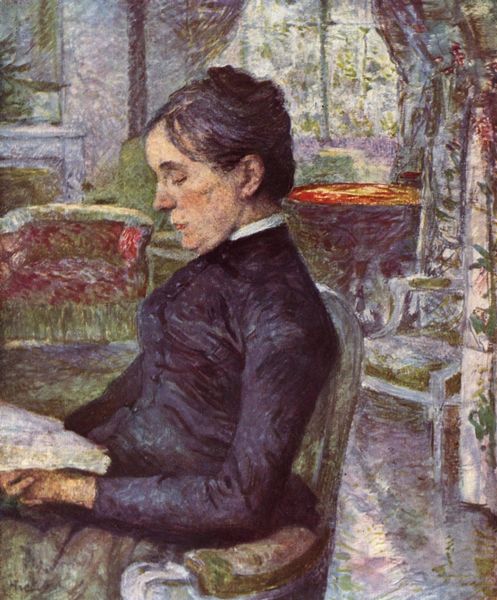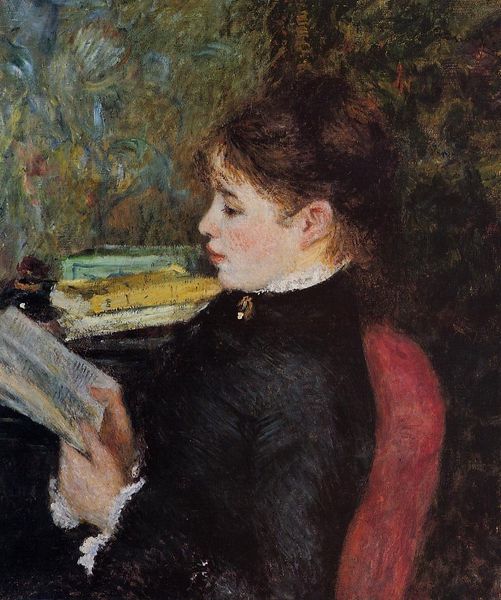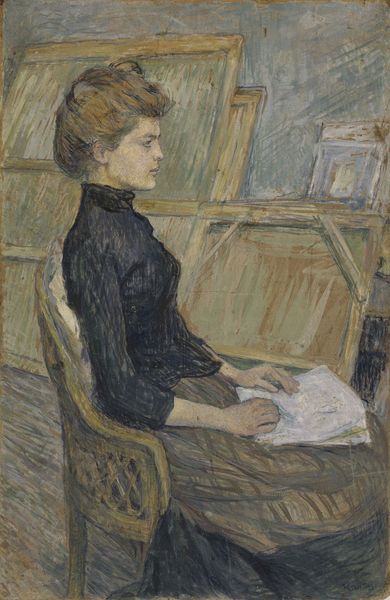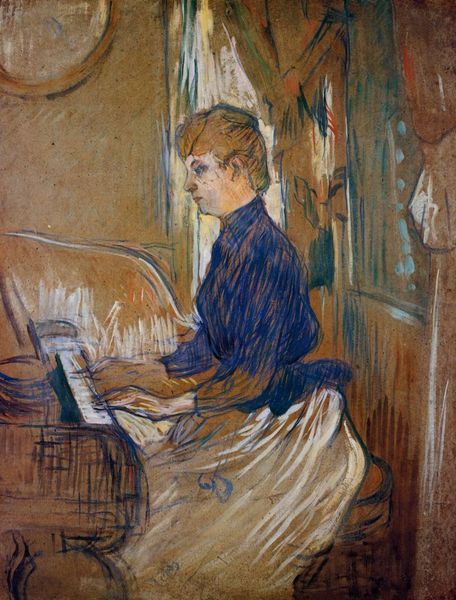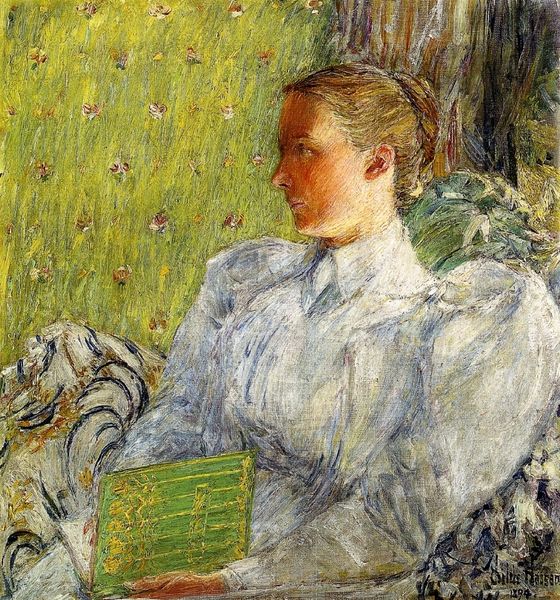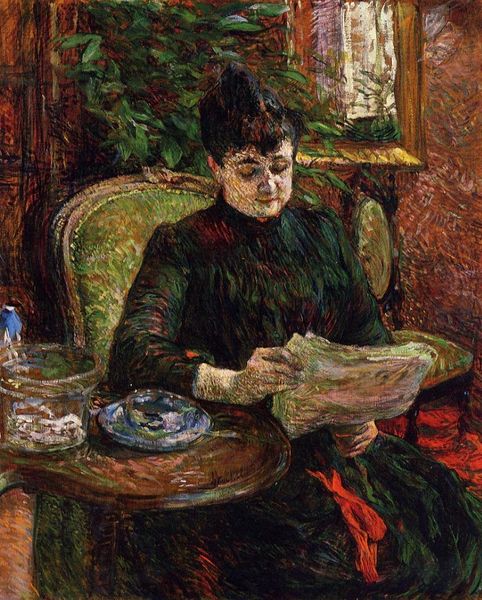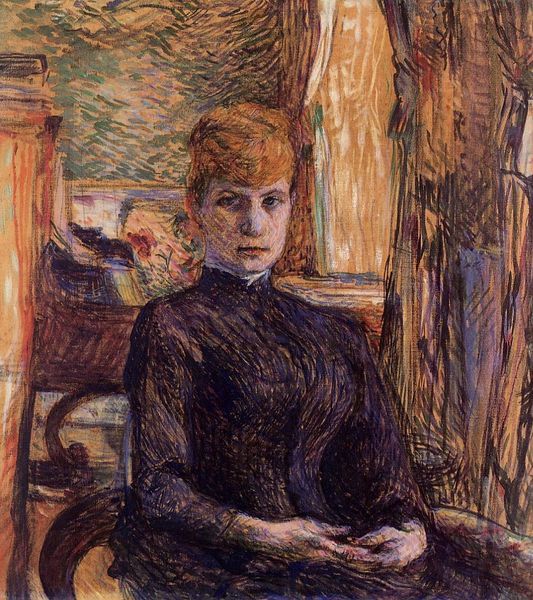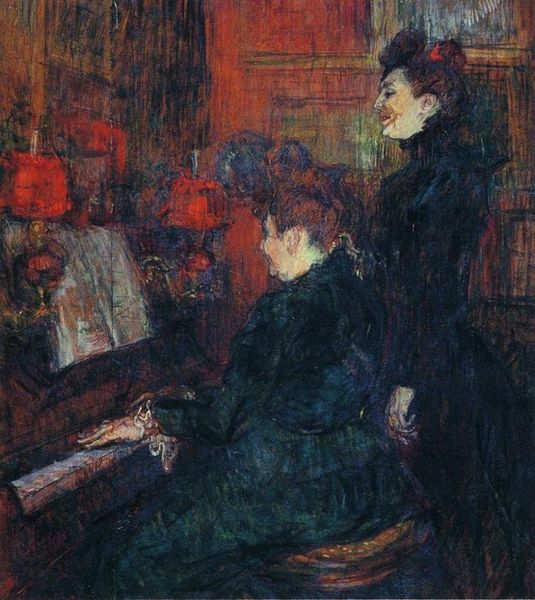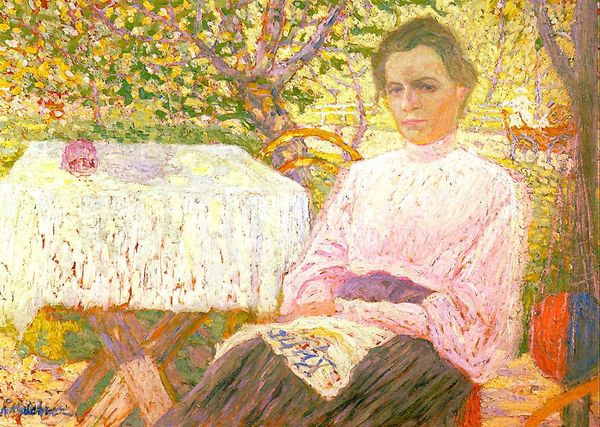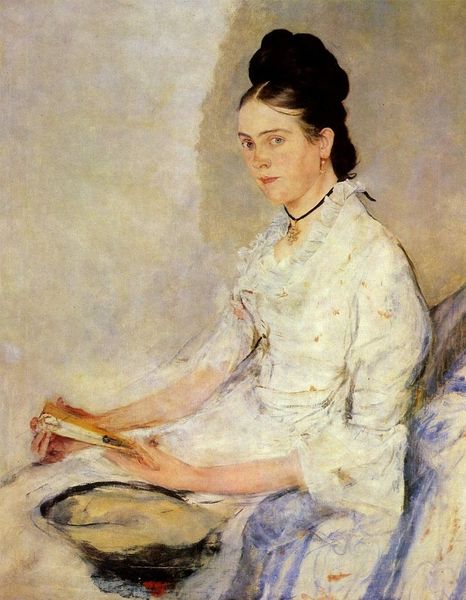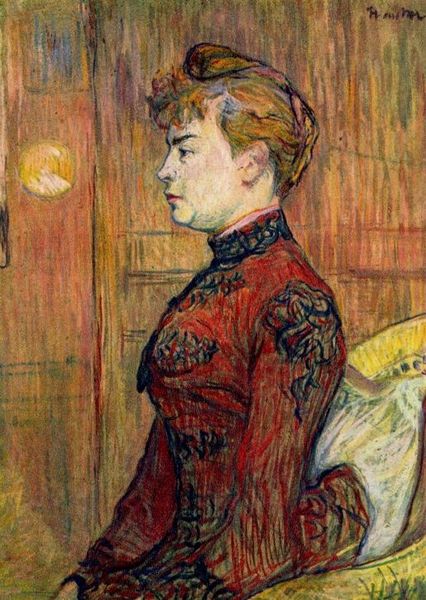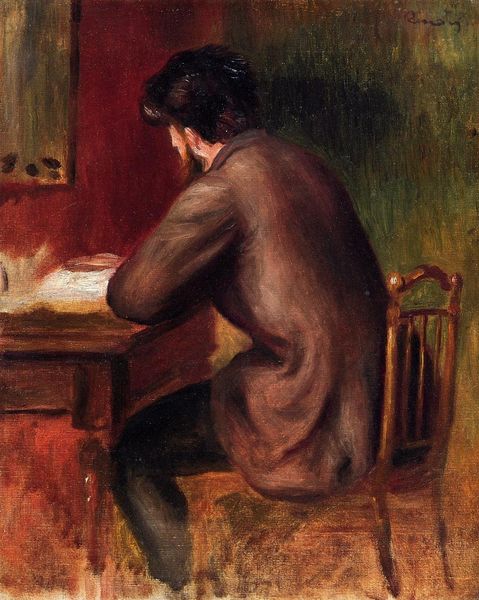
painting, oil-paint
#
portrait
#
painting
#
impressionism
#
oil-paint
#
oil painting
#
intimism
#
post-impressionism
Copyright: Public domain
Curator: Here we see Henri de Toulouse-Lautrec's 1887 oil on canvas painting, titled "Comtesse." It resides at the Musee Toulouse-Lautrec, in Albi, France. Editor: My first impression is quiet contemplation. There’s a softness to it, almost a blurring of edges that speaks to the intimate moment depicted. You can almost hear a pin drop. Curator: Intimacy certainly resonates here. Lautrec’s distinctive Post-Impressionist style emphasizes interiority and everyday life—a sense of modern psychological experience. The comtesse is absorbed in her reading; what do you think it signifies? Editor: I think it’s significant to consider what "reading" would have represented. Beyond simple literacy, books in these settings symbolized leisure and wealth, and also intelligence. How interesting is the way this impressionistic painting offers the same level of detail to the room's fabrics, her face, and hands. What was the Comtesse's social rank and status at the time the artwork was painted? What was she reading? Curator: Considering Toulouse-Lautrec’s known predilections, the Countess' pose is probably quite significant: he typically portrays individuals engaged in honest, perhaps vulnerable moments, and it goes against norms of presentation; it’s quite interesting because "Comtesse" speaks not just about a specific person, but about representations of the nobility more generally, too. Editor: Absolutely, and to see it rendered with such obvious brushstrokes—almost coarse in places—complicates that association with refinement. The materials of painting betray a certain…commonness. Did Lautrec engage with a patron for its execution, or was the painting independent from external factors? Curator: Considering this aspect through cultural lenses, Lautrec wasn’t interested in rendering a social rank, instead he captured psychological and social dimensions. Perhaps even commenting on his subject's intellect beyond their societal position. Editor: It truly subverts expectations, doesn't it? I came in looking at the title of the painting with its promise of nobility, but am more touched by her absorption and quiet intellectuality. Curator: Exactly! It challenges viewers to reconsider the traditional narratives and impressions linked with that rank. I hadn't quite registered the shift that the name creates. Editor: I find it really powerful to observe these moments, that is: observing our social memory, its making, and undoing, thanks to artists' use of their materials. Curator: Precisely. "Comtesse" invites us to look beyond surface appearances and examine the rich internal lives of its subject and their relationship to the symbolic world surrounding them.
Comments
No comments
Be the first to comment and join the conversation on the ultimate creative platform.
